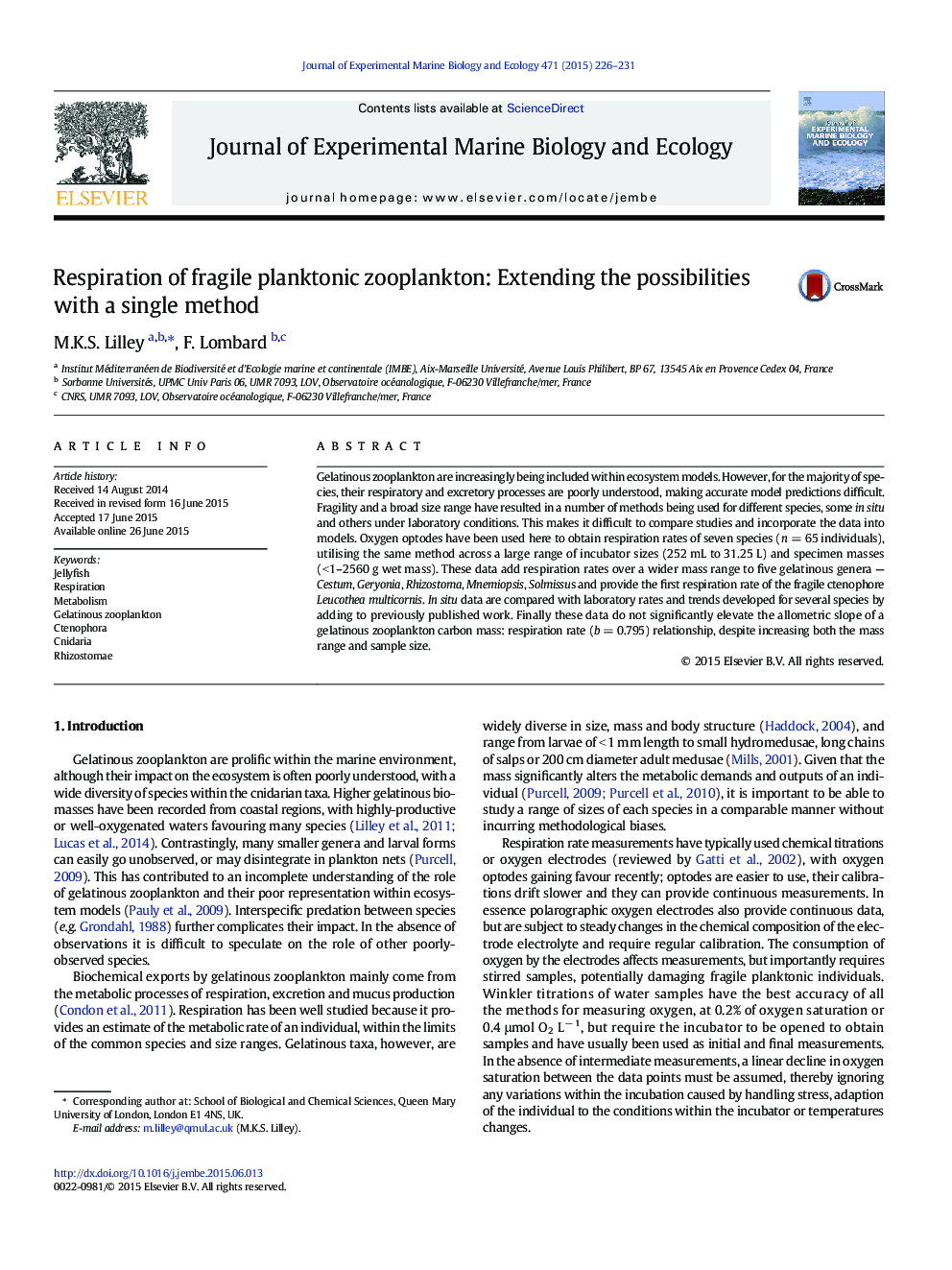| Article ID | Journal | Published Year | Pages | File Type |
|---|---|---|---|---|
| 6303888 | Journal of Experimental Marine Biology and Ecology | 2015 | 6 Pages |
Abstract
Gelatinous zooplankton are increasingly being included within ecosystem models. However, for the majority of species, their respiratory and excretory processes are poorly understood, making accurate model predictions difficult. Fragility and a broad size range have resulted in a number of methods being used for different species, some in situ and others under laboratory conditions. This makes it difficult to compare studies and incorporate the data into models. Oxygen optodes have been used here to obtain respiration rates of seven species (n = 65 individuals), utilising the same method across a large range of incubator sizes (252 mL to 31.25 L) and specimen masses (< 1-2560 g wet mass). These data add respiration rates over a wider mass range to five gelatinous genera - Cestum, Geryonia, Rhizostoma, Mnemiopsis, Solmissus and provide the first respiration rate of the fragile ctenophore Leucothea multicornis. In situ data are compared with laboratory rates and trends developed for several species by adding to previously published work. Finally these data do not significantly elevate the allometric slope of a gelatinous zooplankton carbon mass: respiration rate (b = 0.795) relationship, despite increasing both the mass range and sample size.
Related Topics
Life Sciences
Agricultural and Biological Sciences
Aquatic Science
Authors
M.K.S. Lilley, F. Lombard,
